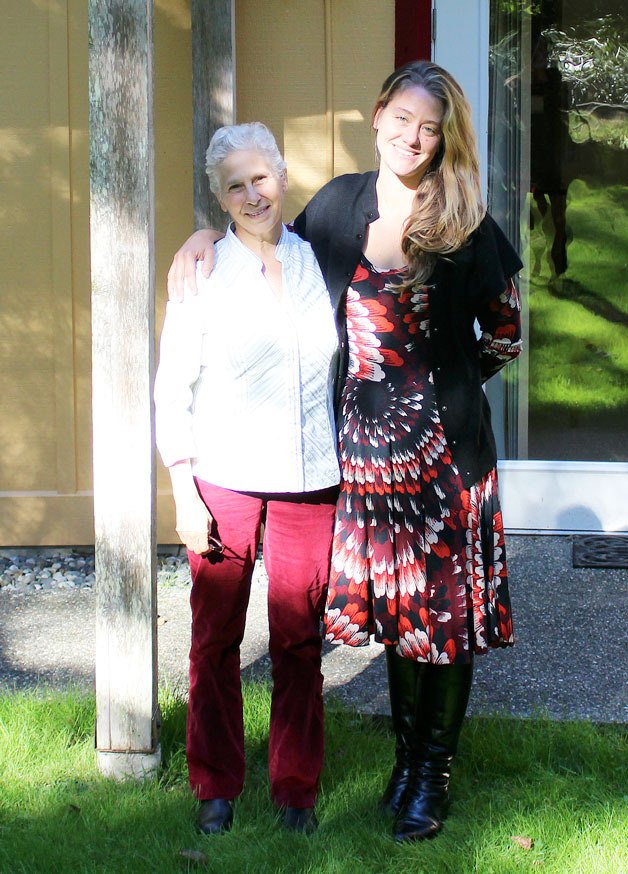Like a thread in an intricately woven tapestry, Cynthia Jaffe has become entwined in the lives of over 1,200 families, mothers and children in her 25 years as a midwife.
Befitting the profession, Jaffe’s quarter-century anniversary has been commemorated with a multi-generational milestone: the delivery of a baby whose mother Jaffe had birthed 25 years prior.
“Being a midwife in a smaller community has been the greatest gift of my life,” said Jaffe, founder of Greenbank Women’s Clinic and Birth Center. “I’ve been the midwife for whole families, delivering all of their children, and I get to see them. Some of the urban midwives never run into their clients, and we run into people all the time.
“That has been really wonderful.
“I feel very blessed to have had this life.”
Another milestone for the practice is the arrival of Erin Miksic, certified nurse midwife, who joined the practice this summer.
“My practice was really growing and after 25 years I felt like it was time to bring in the next generation of midwives,” Jaffe said of bringing Miksic on board.
The practice has a 99 percent return rate, according to Jaffe, and welcomed over 100 new patients last year.
Jaffe and Miksic are the only two midwives on staff; Annastasia Kovscek and Miksic both provide well woman services, and Diana Miller is studying under Miksic and Jaffe’s guidance as a student midwife.
Because of Miksic’s nurse midwife licensure, her services are also covered by naval medical insurance, whereas Jaffe, a certified midwife without the nurse component, is not.
From the beginning, accessibility has been a major focal point of Jaffe’s practice. She established the birth center because Medicaid did not cover home births, and because it helped to bridge the gap for women who did not want to birth at home or in a hospital.
Her long-term aspiration is to provide a full array of services, including pregnancy-related mental healthcare services and support groups, among other things, through the clinic and birth center.
Miksic joins the center from New York City, where she worked as a midwife in an inner-city hospital. She responded to an ad placed by Jaffe in the American College of Nurse-Midwives publication and accepted the opportunity soon after visiting the center.
“It’s the closest thing I can imagine to my dream practice,” Miksic said. “The clinic and the women’s health piece, and being able to practice out-of-hospital with an amazing mentor, it seemed like I would be insane not to come.”
“I pinch myself daily. I mean, you look out at this lawn and this is pretty much what a Hollywood version of heaven might look like,” Miksic said with a laugh.
Though there are other midwives in the area, the birth center is the only one of its kind on the island.
Throughout the past 25 years, Jaffe has witnessed a slew of changes in the ways births are handled in the United States, including the incorporation of midwifery and out-of-hospital birth as more mainstream options.
“Twenty-five years ago, people would ask what I do and I would say I’m a midwife, and they’d say. ‘Oh what’s that?’ That almost never happens anymore,” Jaffe said.
Both women noted more women are turning to midwives to attend their births because they are exercising more personal agency in the birth process. Also, “The Business of Being Born” and similar documentaries have helped to increase awareness of issues like the nation’s startlingly high cesarian rate, prompting women to ask questions and consider alternatives.
Though both women said cesarians are necessary and life-saving at times, they shouldn’t be considered the norm in what midwives and many others see as a natural physiological process.
“When I used to talk to old obstetricians, I felt like we were talking apples and apples. A lot of them came from that background too. A lot of them were trained by midwives or with midwives, and I guess I don’t feel that anymore,” Jaffe said.
In a perfect world, said Miksic, midwives could more often work closely with hospital doctors to provide a greater continuum of care for patients, including those who require a hospital birth.
In the meantime, Jaffe and Miksic look forward to the next 25 years, and Miksic to earning gray hair like her mentor’s.
“It’s the one profession where gray hair gives you a lot of clout,” Miksic joked, noting her admiration for Jaffe’s long-term dedication and success in the field.
In the 25 years since she began her practice, Jaffe has never lost a baby or a mother in a birth.
“I’m really proud of that,” she said.



